Toyota's Electric Vehicle Plans Just Got Aggressive
Toyota has revealed a new range of electric cars it plans to launch, accelerating its roadmap for EVs by five years as it tries to keep pace with the rapidly moving segment. The automaker detailed its goals for fully-electric, plug-in hybrid, and hybrid vehicles along with new urban transportation in Japan this week, including new partnerships that it hopes will make electrification more affordable.
Toyota, of course, is no stranger to electrification. The automaker arguably popularized the gas-electric hybrid with the original Prius, and was among the first to commercially launch a fuel-cell vehicle, the Mirai, running on hydrogen gas. Its hybrid technology went on to spread as an option through most of its models.
In recent years, however, Toyota has lost momentum compared to EV rivals. That's particularly been the case when it comes to purely electric cars, rather than hybrids. In the US, indeed, although the automaker at one point offered a battery-electric (BEV) version of the RAV4, it currently lacks a single fully-electric model.
What this week's news isn't about is hybridization going away any time soon. Toyota execs say they're still committed to that technology, and see it as remaining a key part of the automaker's electrification strategy moving forward. What is changing is how quickly a new breed of Toyota EVs will arrive.
By 2025, Toyota now says, it aims to have sold 4.5 million or more hybrids and plug-in hybrid vehicles, and 1 million battery-electric and fuel-cell cars. That's approximately five years earlier than the company was predicting as recently as December 2017. Those numbers would mean that roughly half of Toyota's global sales would be of electrified models.
Achieving that will take more than just good intent, of course. For a start, more EVs will mean more batteries: Toyota says it aims to have at least 10 models available globally from 2020, spanning everything from compact cars and medium-sized crossovers and sedans, through to various sizes of SUV and minivan. The automaker predicts a roughly 20-fold increase in battery demand by 2025.
So, it's adding new partners to its existing collaboration with Panasonic and PEVE. Battery manufacturers CATL and BYD are joining, so as to ensure Toyota has enough supplies to meet its predicted demand. At the same time, it's also looking at new ways that batteries can be reused and recycled, once they've reached the end of their natural lifespan in vehicles.

The range of EVs which Toyota envisages is a comprehensive one. A new image shows six proposed cars for global sales, running the gamut from crossovers through hatchbacks and minivans. Details are in short supply at this stage – it's unclear which the automaker envisages as being purely electric and which might be hybrid – but they all show a more aggressive, angular design language, reminiscent both of Toyota's existing EVs but also of recent trucks like the new RAV4 and latest 4Runner.
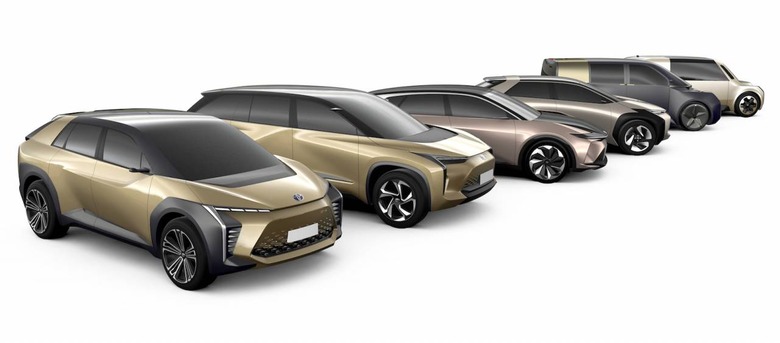
Toyota will collaborate with Subaru on the e-TNGA platform, its architecture for electrified vehicles. The two firms will create the platform together, and then develop a C-segment all-electric BEV SUV which can be sold under each brand, as well as reused for future models.
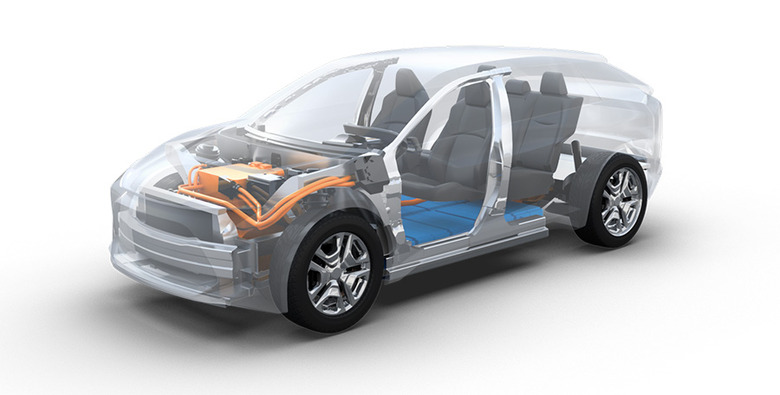
The proposed platform should be highly flexible. It'll support both front- and rear-wheel drive configurations, along with all-wheel drive, through a variety of motor combinations. Only a few dimensions will be fixed, like the width and length of the motors along with the battery pack slung underneath the cabin. The wheelbase, front and rear overhangs, and the overall width of the car can be modified to suit its requirements.
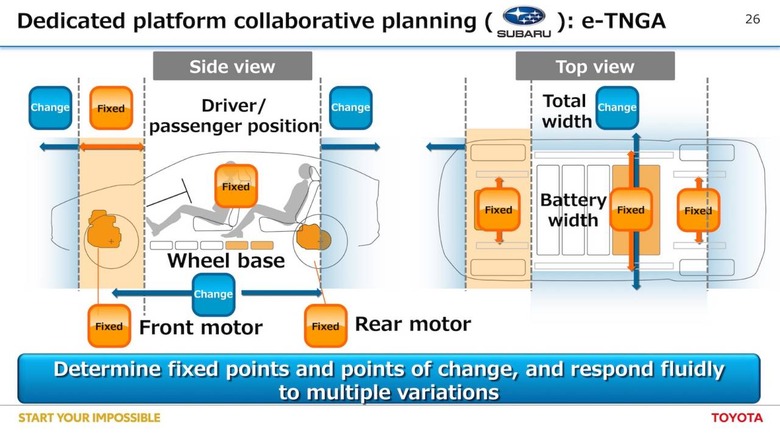
It's Japan, though, which arguably gets the most interesting range. There, Toyota plans to launch a series of ultra-compact BEVs and "walking area" BEVs to satisfy urban drivers, those who commonly make only short trips, and people who might not want – or be able – to drive a regular car.
The 2017 Concept-i RIDE two-seater prototype, for example, will spawn two tiny two-seaters, one for consumers and another for businesses. The consumer version is expected to arrive in 2020, Toyota says, and be limited to around 37 mph for urban use. Total range should be around 62 miles, with a focus on ease of use and parking.
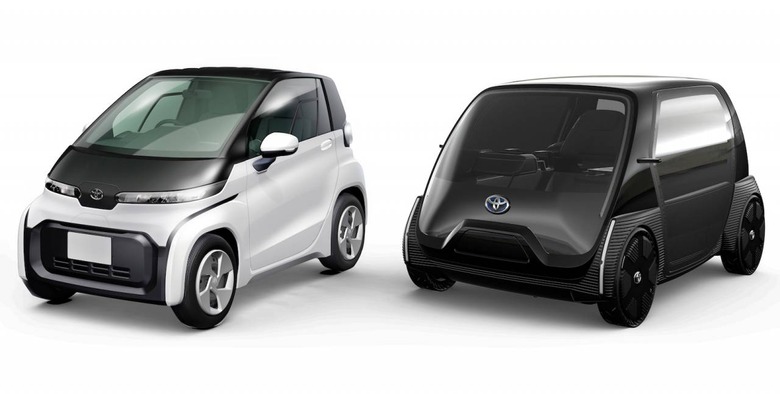
There's also a nod to the Toyota i-ROAD concept, the tilting three-wheeler that the automaker has been showing off since 2013. Unfortunately there's still no attached release date, despite how much fun we've had driving the tilting trike.
The walking area BEVs, meanwhile, will call on prototypes like the Concept-i WALK from back in 2017. That will spawn a three-wheel scooter in 2020, with roughly 9 miles of range and a swappable battery, while 2021 will bring both a seated-type scooter and an EV attachment for a standard wheelchair. Toyota doesn't necessarily see people buying these outright, instead envisaging rentals and leasing being more likely as people tap into electrified transportation only when it's specifically required.
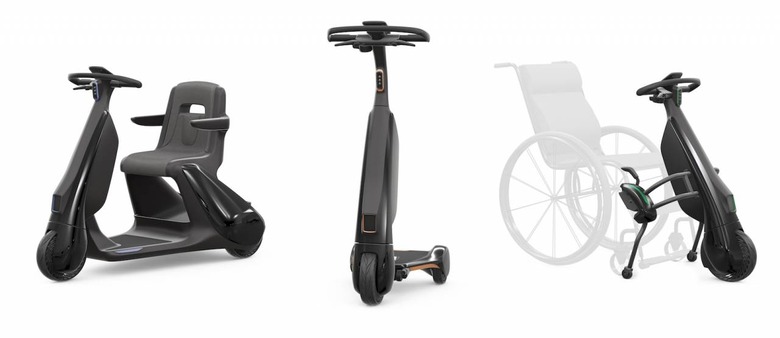
It's an ambitious – though necessary – path for Toyota to find itself on. "Much work lies ahead to achieve the popularization of BEVs," the company concedes. "Specifically, we will be focusing on vehicle development and the stable supply, improved durability, and reuse of batteries." The good news for drivers is that we should see the fruits of that work in Toyota dealerships much earlier than we previously expected.
